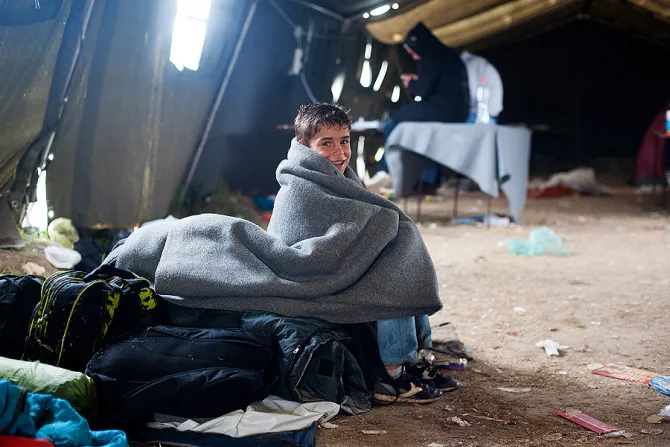Washington D.C., Mar 15, 2016 / 02:12 am
March 15 marks five years since civil war broke out in Syria. The conflict has had devastating consequences for the people of the country, many of whom have been forced to flee.
Since 2011, Catholic Relief Services has helped to assist more than 1 million Syrians in the Middle East and Europe who have been affected by the war. The following Q-and-A is offered by Kevin Hartigan, who serves as CRS' regional director for the Middle East.
Q: What would you consider to be the most pressing needs of Syrian refugees at this stage in the conflict?
The priority needs remain food, shelter and health care, but most refugee families are also desperate to find a means of earning their livelihood and a way to educate their children. After five years of war, most Syrian refugees have exhausted their resources and are barely getting by on humanitarian aid, support from distant family members, and marginal income from informal labor. Meanwhile, the number of displaced Syrians continues to grow rapidly, most recently as a result of current fighting in Aleppo.
CRS continues to provide a great deal of emergency relief but we have also steadily increased efforts to provide refugees with education and livelihoods support. More than half of Syrian refugees are children and most have been out of school for years. There is a real danger that they'll become a lost generation. Thanks to the generous support of our donors, CRS and our local Church partners are providing tens of thousands of Syrian refugee children with education and psychosocial support.
Q: What sets the CRS response apart from that of other organizations?
Thanks to our Catholic identity, we have long-established partnerships with Church agencies in most countries where we work. Throughout the Middle East and Europe, we work with local Catholic social services agencies that are at the forefront of the humanitarian response; providing comprehensive, dignified support to people of all religions. This enables us to work outside of refugee camps, reaching the least-served groups of refugees as well as the host communities that support them. This is particularly important given the strain that the refugee influx has put on the social infrastructure and economies of host countries.
Q: Now that the conflict is going into its sixth year, what are some of your biggest concerns for those who have fled to neighboring countries or to Europe?
The needs of displaced Syrians grow every day and the neighboring host countries are overwhelmed. These countries must be supported to provide decent opportunities for refugees, including education and employment. Otherwise refugees will continue to be drawn the attempt the journey to Europe, with all of the dangers, costs, and perils of family separation that this entails.
Q: What do you think is the biggest misperception people have of Syrian refugees?
Unfortunately, and somewhat incredibly, the refugees have sometimes been wrongly associated with the very terrorism that they have been victim to. No group of people in the world has suffered more at the hands of extremists than the overwhelmingly peaceful population that has fled Syria. For this group to be stigmatized by that extremism is cruelly ironic. It is worth noting that the refugees - more than half of whom are women and children – have been living largely without incident, in their millions, in Lebanon, Jordan and Turkey these past years.
Q: What are your hopes for the future?
Our only hope has to be for peace in Syria. We won't see an end to the suffering until the conflict ends. The United States should continue to take a leadership role in promoting negotiations and a peaceful settlement.


